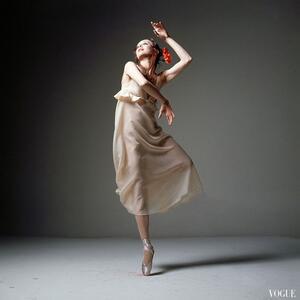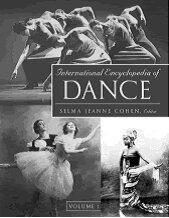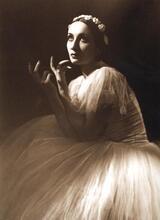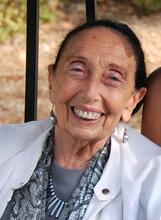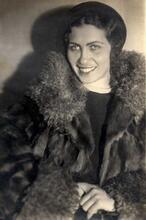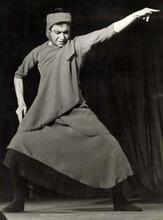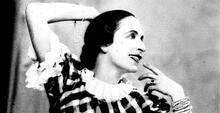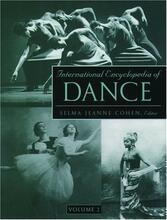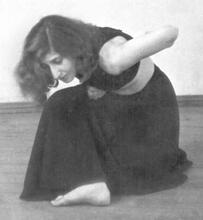Allegra Kent
During ballerina Allegra Kent’s long career with the New York City Ballet, she starred in many of George Balanchine’s most famous ballets, originating several principal roles created specifically for her. At fourteen, Kent received a scholarship to the School of American Ballet; she was admitted to the New York City Ballet one year later, only four years after beginning her dance training. Balanchine choreographed Ivesiana for her in 1954 and she soon became a principal dancer. Kent danced leading roles in Swan Lake and Stars and Stripes, and at the height of the cold war she won over Russian audiences performing Agon with Arthur Mitchell at the Mariinsky Theatre. After retiring, Kent taught at dance schools around the country and worked with The George Balanchine Trust.
Early Life and Jewish Identity
The beloved American ballerina Allegra Kent created and danced in nearly all principal roles in George Balanchine’s celebrated oeuvre during her thirty years as a dancer with the renowned New York City Ballet.
Born Iris Margo Cohen on August 11, 1938, to Harry Cohen of Texas and Shirley Weissman of Wisznice, Poland, she spent her childhood being shuttled back and forth from Florida to California while her father pursued various means of supporting the family. During a period of relative stability, she settled with her mother and older brother Gary in Los Angeles. Through her own initiative, she began studying dance with Bronislava Nijinska, sister of Vaslav Nijinsky, and Spanish dancer Carmelita Maracci.
With her father traversing the country as a traveling salesman, Kent’s mother took control of the family, exerting a tremendous influence, both positive and negative, on her daughter’s life and career. In her autobiography, Once a Dancer..., Kent describes her mother’s aversion to Jewishness, beginning with changing their last name, adopting Christian Science, and later coercing her daughter to undergo reconstructive facial surgery. Following her older sister Wendy’s example, Kent chose a new name.
Dance Training and Career
Allegra Kent and her mother joined Wendy, an actress, in New York in 1951. Kent immediately received a scholarship to the School of American Ballet and was admitted to the New York City Ballet (NYCB) one year later, at age fifteen, four years after beginning her dance training. Balanchine reportedly said of Kent when he first saw her, “I have never seen such raw talent.”
His interest in Kent was evident when he choreographed Ivesiana for her in 1954. Following a brief withdrawal from the company under pressure from her mother, Kent rejoined for another European tour. Upon her return to the United States, she was promoted directly from the corps to principal dancer. She was immediately cast in leading roles in Swan Lake with Jacques D’Amboise, The Seven Deadly Sins, and the new Stars and Stripes.
Kent caught the attention of the famous photographer Bert Stern during a Broadway stint in Shinbone Alley. Their troubled marriage lasted ten years, until Stern’s addiction to drugs drove Kent to sever the relationship.
Kent suspended her career three times during their union to have children. Trista’s birth followed Kent’s performances in Balanchine’s landmark Episodes (1959) and a revival of La Sonnambula with Erik Bruhn. Kent became the darling of Russian audiences during a 1962 tour of the USSR. At the height of the cold war, Kent brought down the house of the Maryinsky Theatre with Arthur Mitchell in Agon and danced in the Kremlin. In the United States, the openly erotic, Japanese-style Bugaku (1963) featured Kent and Edward Villella. Kent’s daughter Susannah was born in 1964 and her son, Bret, in 1967.
Personal Life and Later Career
Kent survived as a single mother through her contract with NYCB (although with her declining emotional stability, she danced only once a year), as well as by teaching and making guest appearances, including in Apollo with Mikhail Baryshnikov.
The death of her father led to further depression and decline in Kent’s career. Her dismissal from the New York City Ballet following Balanchine’s death coincided with her happy but short-lived marriage to filmmaker Aram Avakian. Following Avakian’s death, Kent continued teaching and coaching. In 1992, she met and married her third husband, Bob Gurney.
Despite continued personal, financial, and physical problems, Kent persevered. At age fifty, she came out of retirement to dance in John Clifford’s Notturno. Critics once again praised her unique expressiveness, humor, refinement, and sensuality. After 2002, she guest taught at dance schools around the country, participating in seminars on Balanchine’s legacy and helped to coach a new generation of dancers for The George Balanchine Trust. Allegra Kent lives in New York City.
Selected Works by Allegra Kent
Allegra Kent’s Water Beauty Book (1976).
The Dancer’s Body Book, with James and Constance Camner (1984).
Once a Dancer ... (1997).
“Dancing for Balanchine: Six Balanchine Ballerinas.” Anne Belle, dir. Seahorse Productions in association with WNET/NY (1989);
Greskovic, Robert. “Some Artists of the New York City Ballet.” Ballet Review 4, no. 4 (1973);
“Intersections: Allegra Kent, Balanchine’s Ballerina.” National Public Radio, January 19, 2004;
Kirstein, Lincoln. What Ballet Is About: An American Glossary (1970).

